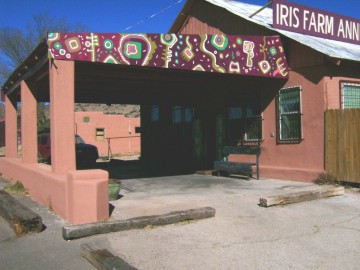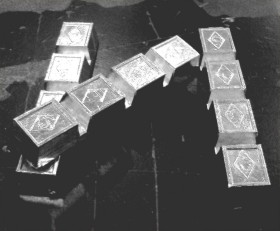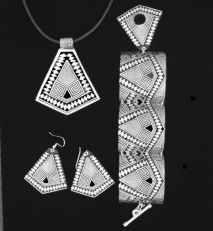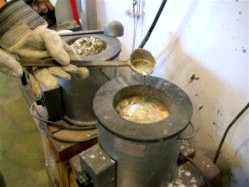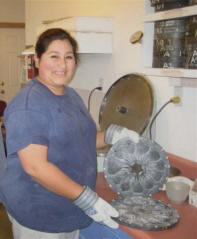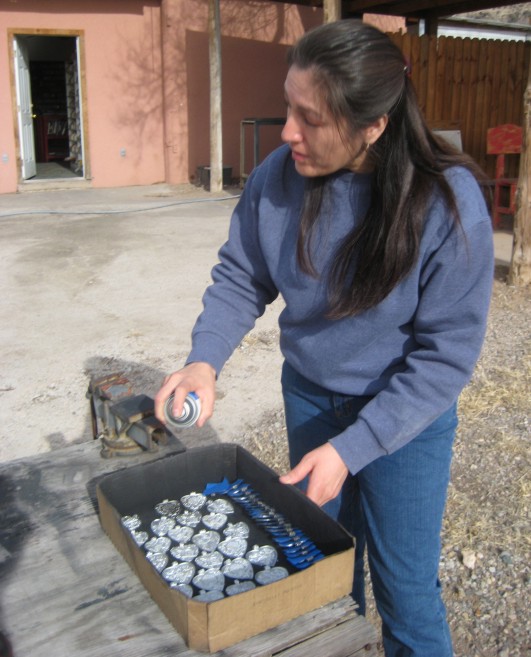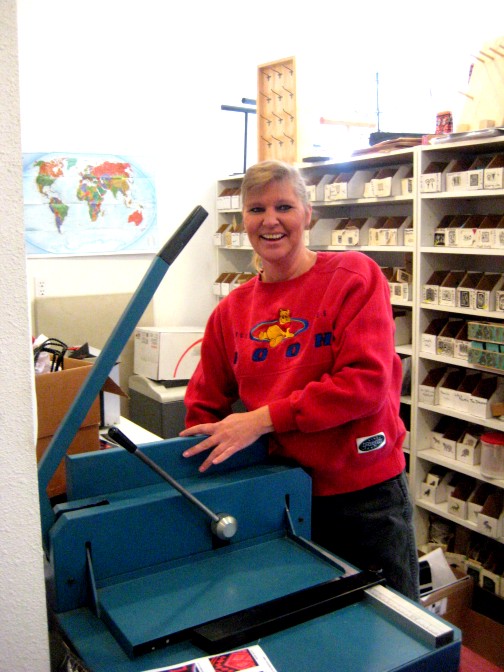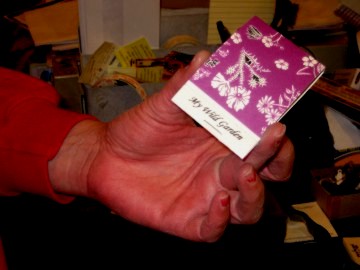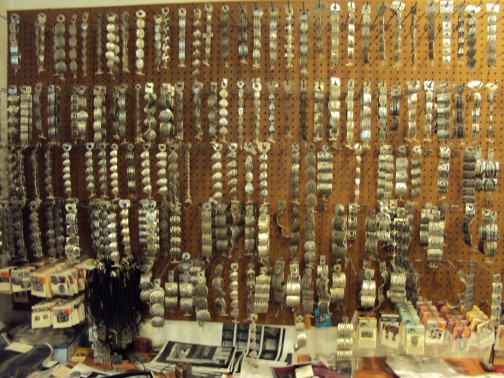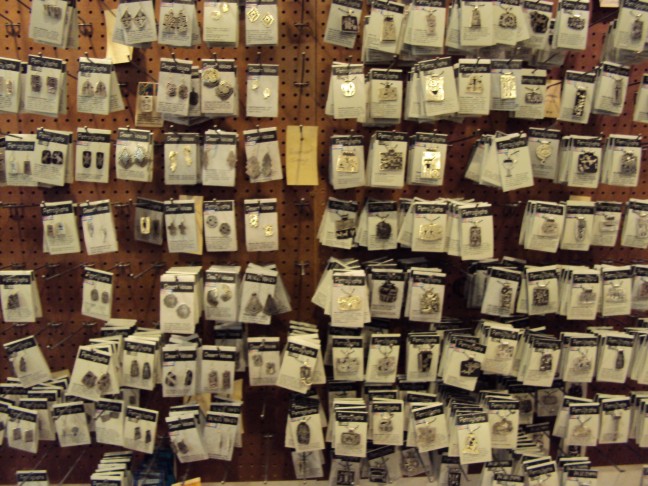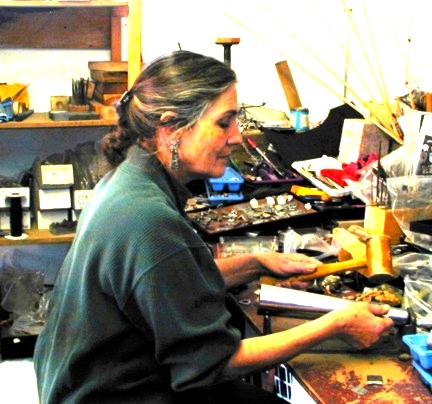
Seely's pewter jewelry, which she designs, casts, and hand finishes, is featured in more than 350 stores and galleries across the country. Seely's jewelry line is produced by Seely in her studio. Her include pins, pendants, necklaces, and bracelets in contemporary and traditional genres. Her traditional designs include ethnic, tribal, Hispanic, ancient american indian (rock art) and egyptian.
How it's Made
One of New Mexico's most well known jewelry fabricators.
|
See How we go from: |
|
|
This |
To This |
|
|
|
Alice Seely designs all the jewelry, oversees
production, and personally makes a lot of
the jewelry.
| We begin by heating an ingot of pewter in a pot to 600 degrees. Below is a pot of melted pewter. | We pour the melted pewter into a centrifuge (spinner) containing a rubber mold Alice has previously made. Below is a rubber mold. | The centrifuge spins for 30 seconds after the melted pewter is poured. Below is the open centrifuge with the mold held down by a round metal frame. | ||
|
|
|
All Photos Courtesy of Ralph Nix |
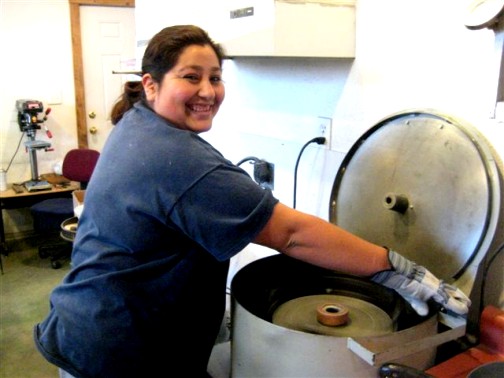 |
| The centrifuge has been started, the rubber mold is inside, The hot pewter is being poured into the mold through the top of the casting machine.. | After 30 seconds the centrifugal machine stops, we open the cover, take out the mold, and pull the finished pieces off the mold. The pieces are on gates, "spokes" that go back in the pewter pot to be re-melted. |
The cast pieces are broken off the gates and placed in a box, face up. The box is taken outside and the pieces are sprayed with a special paint that doesn't come off after it dries. |
||
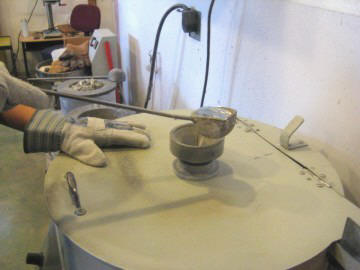 |
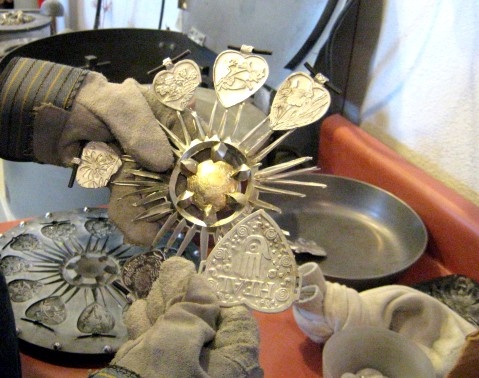 |
|
| The painted pieces, We wrap parts of the pieces in blue tape where we don't want to paint them. | The painted pieces are brought back inside for cleaning. We use old blue jeans, since they have no lint, and wipe off the top of the pieces, leaving the black paint inside the recesses for definition. | We finish drying the pieces under a hot lamp to set the paint. |
||
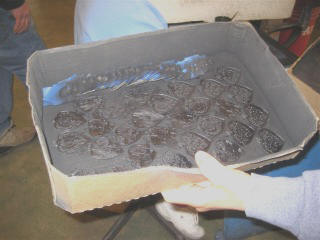 |
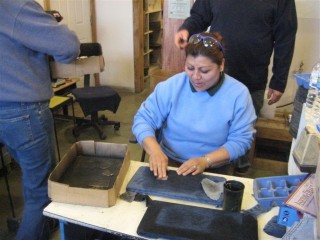 |
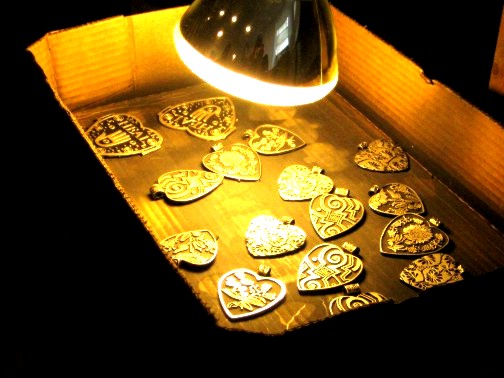 |
| After the pieces dry, they are buffed on a felt wheel by hand until they are shiny, smooth, and have clean edges. | We take the buffed pieces into the cleaning room and spray off any dust left from the buffing process. | We attach pin backs to pins with a special riveting process. | ||
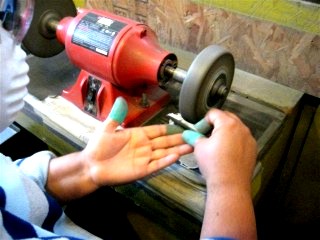 |
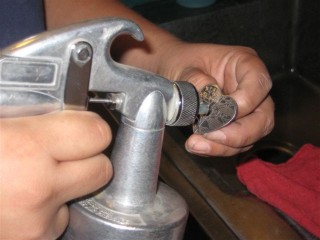 |
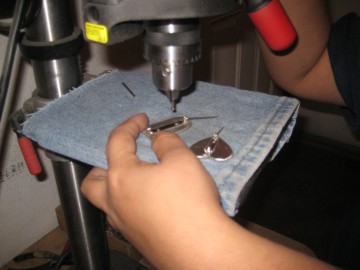 |
| Since our factory is 26 miles from town, we print and cut all of our display cards and make all of our own display boxes. Here we are cutting our cards on a cutter. | We package our pins in matchbooks that we print, fold and cut in-house. This is a pin inside a matchbook | This is the outside of a finished matchbook. There is special writing on the back of the matchbook that makes the pin special. | ||
|
|
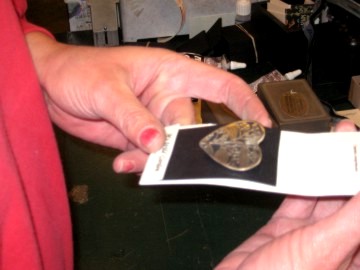 |
|
| Our Earrings and pins are ready for packing and shipping | Customers can purchase bracelets right off the wall at factory prices. |
Pins, Pendants and Earrings are also available. |
||
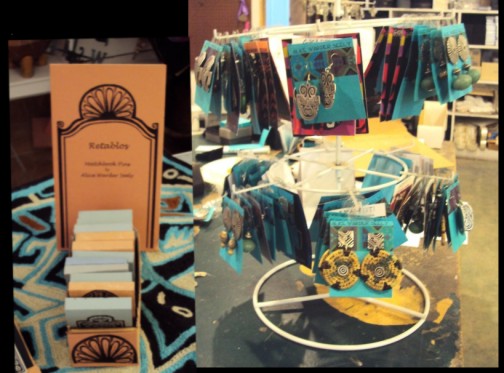 |
|
|
\
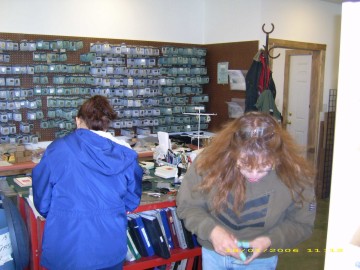
shipping room
